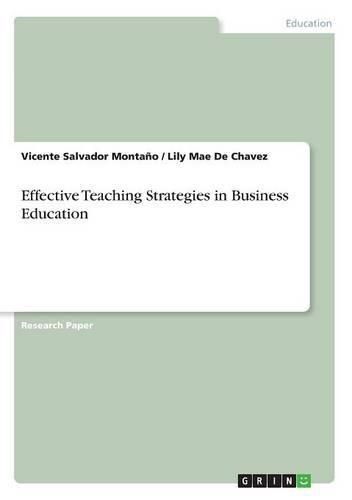Readings Newsletter
Become a Readings Member to make your shopping experience even easier.
Sign in or sign up for free!
You’re not far away from qualifying for FREE standard shipping within Australia
You’ve qualified for FREE standard shipping within Australia
The cart is loading…






Research Paper (postgraduate) from the year 2015 in the subject Pedagogy - Higher Education, grade: 97.00, University of Mindanao (University of Mindanao), language: English, abstract: Numerous studies dwell on investigating the best teaching strategies for students to learn. Few studies try to investigate teaching strategies that are effective in business education. However, fewer studies examine the preferred teaching strategy of business students. This study explores the preferred teaching strategy of business students by using the conjoint analysis. The regression model suggested that a significant proportion of the total variation in the student’s ranking was predicted by quizzes (-1.47E-15), group work (1.0), project (1.3), recitation (-6.52E-16), lecture (1.0) and time management (0.33) [F(6, 20) = 11.67, p = 0.008]. The result implied that business students preferred the scaffold learning in a student-centered class. A blended learning must be used when teachers engaged students in lectures and reporting. In addition, a teacher’s poor time management of class affects learning.
$9.00 standard shipping within Australia
FREE standard shipping within Australia for orders over $100.00
Express & International shipping calculated at checkout
Research Paper (postgraduate) from the year 2015 in the subject Pedagogy - Higher Education, grade: 97.00, University of Mindanao (University of Mindanao), language: English, abstract: Numerous studies dwell on investigating the best teaching strategies for students to learn. Few studies try to investigate teaching strategies that are effective in business education. However, fewer studies examine the preferred teaching strategy of business students. This study explores the preferred teaching strategy of business students by using the conjoint analysis. The regression model suggested that a significant proportion of the total variation in the student’s ranking was predicted by quizzes (-1.47E-15), group work (1.0), project (1.3), recitation (-6.52E-16), lecture (1.0) and time management (0.33) [F(6, 20) = 11.67, p = 0.008]. The result implied that business students preferred the scaffold learning in a student-centered class. A blended learning must be used when teachers engaged students in lectures and reporting. In addition, a teacher’s poor time management of class affects learning.